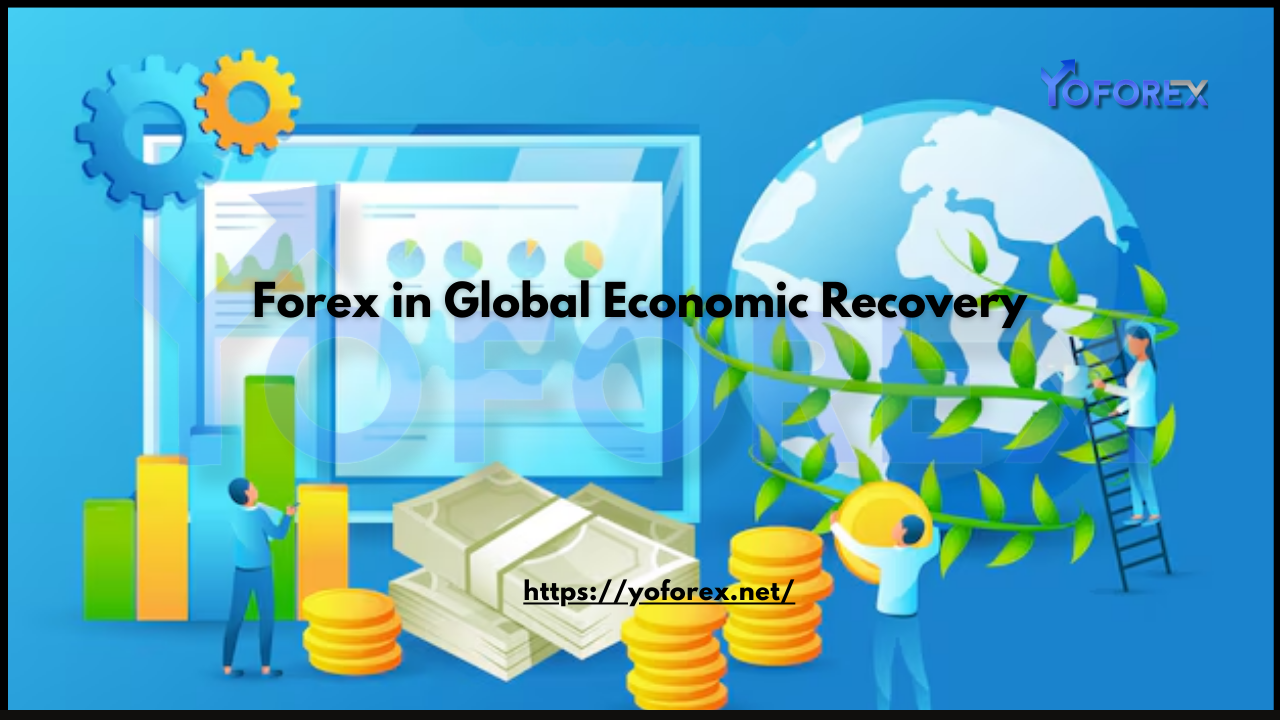The COVID-19 pandemic has left an indelible mark on the global economy, disrupting trade, supply chains, and financial markets. As nations strive to recover, the foreign exchange (forex) market has emerged as a critical player in facilitating economic revival. This blog explores the multifaceted role of forex in the post-pandemic global economic recovery, highlighting its impact on trade, investment, and monetary policy.
1. Forex as a Barometer of Economic Health
The forex market, with its daily trading volume exceeding $6 trillion, serves as a real-time indicator of global economic health. During the pandemic, currencies of countries with robust healthcare systems and fiscal stimulus packages, such as the US dollar (USD), strengthened due to their safe-haven appeal. Conversely, currencies of emerging markets, which faced vaccine shortages and fiscal constraints, experienced significant depreciation.
Post-pandemic, the forex market continues to reflect economic disparities. For instance, the USD remains strong due to the US’s rapid recovery, driven by stimulus measures and a resilient labor market. In contrast, the euro (EUR) has faced challenges due to slower vaccine rollouts and reliance on high-contact sectors like tourism110. These currency movements provide valuable insights into the uneven pace of global recovery.

2. Facilitating Global Trade and Investment
Forex plays a pivotal role in enabling cross-border trade and investment, both of which are essential for economic recovery. During the pandemic, global trade volumes plummeted, with services trade, particularly tourism, hit hardest. However, goods trade rebounded quickly, driven by demand for home office equipment and digital infrastructure.
Currency exchange rates directly influence trade competitiveness. A weaker currency can boost exports by making goods cheaper for foreign buyers, while a stronger currency can attract foreign investment. For example, the depreciation of the Australian dollar (AUD) during the pandemic supported Australia’s export-driven recovery, particularly in commodities.
Moreover, forex markets facilitate foreign direct investment (FDI), which is crucial for rebuilding economies. Countries with stable currencies and favorable exchange rates are more likely to attract FDI, fostering job creation and technological advancement.
3. Monetary Policy and Exchange Rate Management
Central banks have relied heavily on monetary policy to navigate the economic fallout of the pandemic. Interest rate adjustments, quantitative easing, and currency interventions have been key tools in stabilizing economies. The forex market is deeply intertwined with these policies, as exchange rates influence inflation, trade balances, and capital flows.
For instance, the US Federal Reserve’s decision to maintain low interest rates during the pandemic weakened the USD, boosting exports and supporting economic recovery. Conversely, emerging markets with high inflation and currency volatility have faced challenges in implementing effective monetary policies.
Looking ahead, central banks must strike a delicate balance between supporting recovery and managing inflation. Exchange rate stability will be critical in this regard, as excessive volatility can deter investment and disrupt trade.
4. Forex and the Digital Transformation of Global Trade
The pandemic accelerated the digitalization of global value chains (GVCs), with businesses increasingly adopting e-commerce, fintech, and digital payment solutions. Forex markets have adapted to this shift by facilitating cross-border digital transactions and enabling real-time currency conversions.
Digital currencies and blockchain technology are also reshaping forex markets. Central bank digital currencies (CBDCs) and cryptocurrencies offer new avenues for cross-border payments, reducing transaction costs and enhancing efficiency. However, they also pose challenges, such as regulatory uncertainty and exchange rate volatility.
5. Challenges and Opportunities in a Post-Pandemic World
While forex markets have played a vital role in the global recovery, challenges remain. Exchange rate volatility, driven by geopolitical tensions and divergent recovery trajectories, poses risks for businesses and investors. Developing countries, in particular, face heightened vulnerabilities due to limited access to vaccines and rising debt levels.
On the other hand, the post-pandemic world presents opportunities for greater financial inclusion and sustainable growth. Green finance initiatives, supported by forex markets, can channel investments into renewable energy and climate-resilient infrastructure. Additionally, the rise of emerging market currencies, such as the Chinese yuan (CNY), reflects the shifting dynamics of global economic power.
Conclusion
The forex market is a cornerstone of the global economic recovery, serving as a barometer of economic health, a facilitator of trade and investment, and a tool for monetary policy. As the world navigates the complexities of the post-pandemic era, forex markets will continue to play a critical role in fostering resilience, innovation, and inclusivity. By addressing challenges and leveraging opportunities, the global community can build a more sustainable and equitable economic future.
In this journey, collaboration between governments, central banks, and market participants will be essential. The lessons learned from the pandemic underscore the importance of adaptability and foresight in navigating the ever-evolving landscape of global finance.

